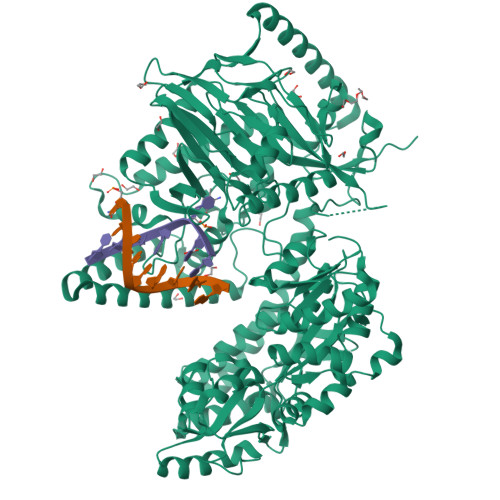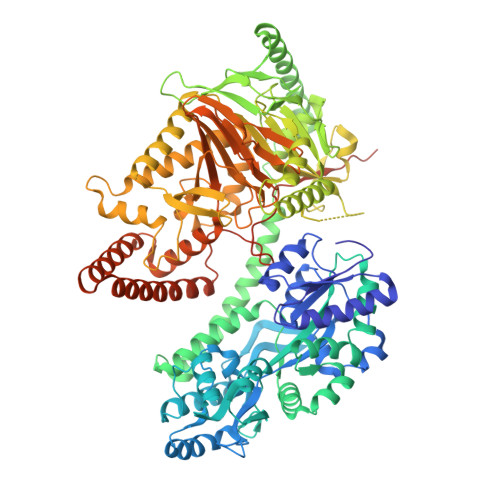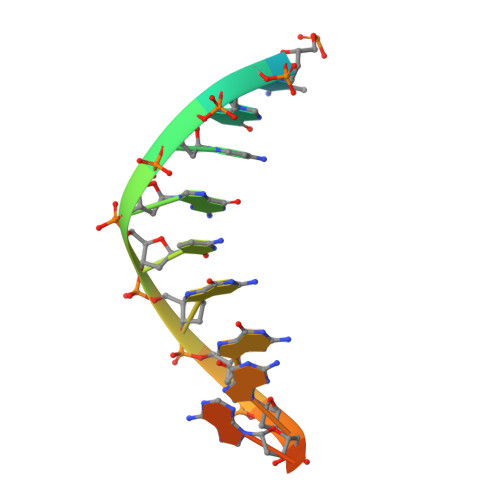Molecular mechanism for vitamin C-derived C 5 -glyceryl-methylcytosine DNA modification catalyzed by algal TET homologue CMD1.
Li, W., Zhang, T., Sun, M., Shi, Y., Zhang, X.J., Xu, G.L., Ding, J.(2021) Nat Commun 12: 744-744
- PubMed: 33531488
- DOI: https://doi.org/10.1038/s41467-021-21061-2
- Primary Citation of Related Structures:
7CY4, 7CY5, 7CY6, 7CY7, 7CY8 - PubMed Abstract:
C 5 -glyceryl-methylcytosine (5gmC) is a novel DNA modification catalyzed by algal TET homologue CMD1 using vitamin C (VC) as co-substrate. Here, we report the structures of CMD1 in apo form and in complexes with VC or/and dsDNA. CMD1 exhibits comparable binding affinities for DNAs of different lengths, structures, and 5mC levels, and displays a moderate substrate preference for 5mCpG-containing DNA. CMD1 adopts the typical DSBH fold of Fe 2+ /2-OG-dependent dioxygenases. The lactone form of VC binds to the active site and mono-coordinates the Fe 2+ in a manner different from 2-OG. The dsDNA binds to a positively charged cleft of CMD1 and the 5mC/C is inserted into the active site and recognized by CMD1 in a similar manner as the TET proteins. The functions of key residues are validated by mutagenesis and activity assay. Our structural and biochemical data together reveal the molecular mechanism for the VC-derived 5gmC DNA modification by CMD1.
Organizational Affiliation:
State Key Laboratory of Molecular Biology, Shanghai Institute of Biochemistry and Cell Biology, Center for Excellence in Molecular Cell Science, Chinese Academy of Sciences, University of Chinese Academy of Sciences, Shanghai, China.




















